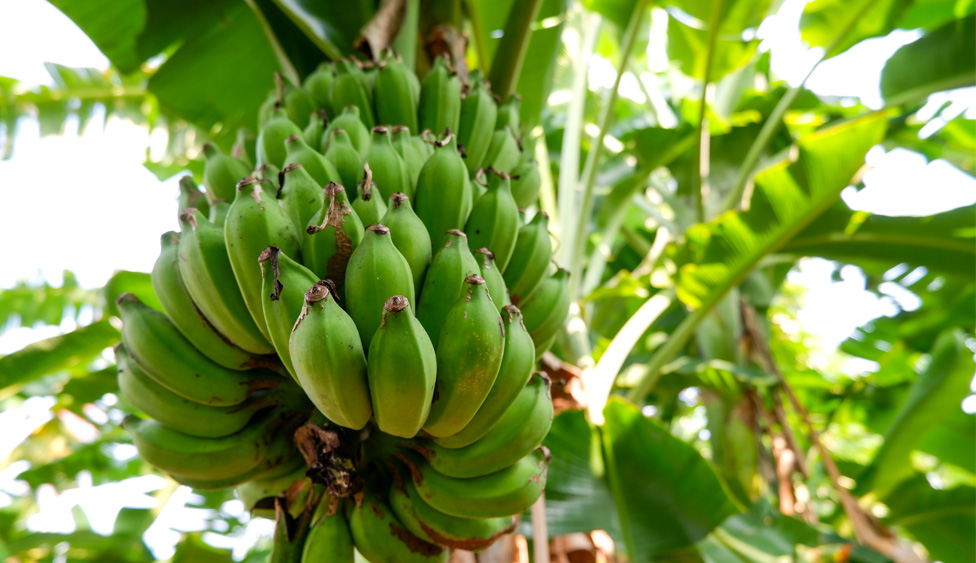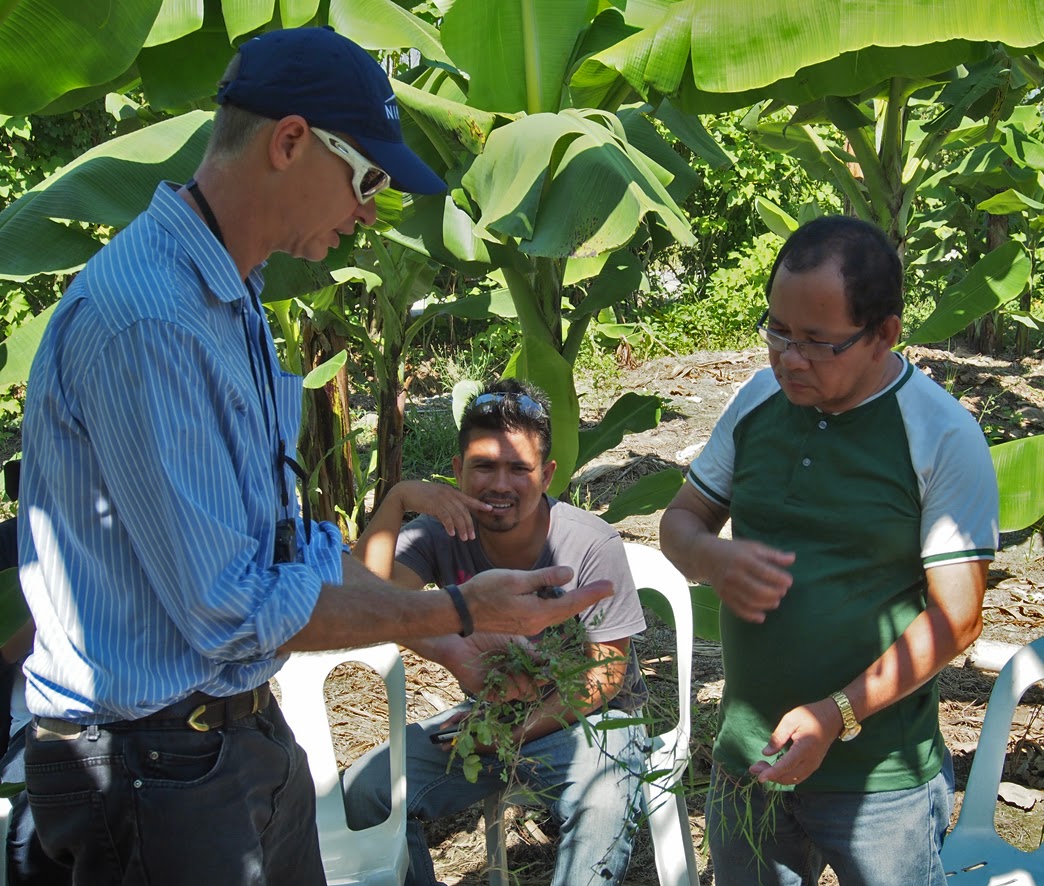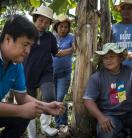Soil harbours answers to banana disease

A new ACIAR-supported project is set to help farmers across South-East Asia tackle a devastating disease of banana crops by looking to the soil for answers.
Bananas are crucial as a subsistence food source and commercial crop throughout South-East Asia, but a devastating soil-borne fungal disease spreading throughout the region is threatening livelihoods and food security.
The new project seeks to unravel the complex interactions between the soil microbiome of banana plantations and the fungal disease pathogen Fusarium wilt Tropical Race 4 (TR4).
The project aims to characterise how farm management practices shape the banana microbiome and affect the susceptibility of bananas to Fusarium wilt to allow banana farmers to turn around the losses of bananas in the region.
Project leader Dr Tony Pattison, Queensland Department of Agriculture and Fisheries, said TR4 obstructs water and nutrient movement through the plant’s vascular system, causing leaves to yellow and wilt and the plant to eventually die.
‘The causal agent of this disease is a fungus (Fusarium oxysporum f. sp. cubense) that can be moved in infected plant material, contaminated soil or water to infect other plants,’ he said.
‘Bananas and the soils used for their production host diverse microbial communities that influence the health of the plant.
‘While many microorganisms that constitute the banana microbiome community are transient, a subset, known as the “core”, are persistently associated with healthy bananas across a range of environments.’
Plant pathologist Dr Riska Amril, Indonesian Tropical Fruit Research Institute, said Fusarium can be spread unintentionally. ‘It can sometimes be spread by contaminated soil on farmers’ tools,’ she said.
ACIAR Research Program Manager Ms Irene Kernot said work was being done in several banana-growing countries to understand the microbiome in different regions and farming systems.
‘Understanding the soil microbiome and how it interacts with banana crops will be the basis for redesigning our farming systems to grow healthy bananas even where soil-borne pathogens are present,’ she said.
‘Banana is an important crop for smallholder farmers in all of the regions ACIAR works in, so supporting research that helps smallholders to grow banana successfully helps improve livelihoods and nutrition.
‘The knowledge of the soil microbiome and how it can contribute to crop health will also benefit growers of other crops and help advance the knowledge on diverse and resilient horticulture ecosystems.’
Professor Siti Subandiyah, Universitas Gadjah Mada, said a better understanding of Fusarium wilt development was essential to help find a strategy to minimise or stop the disease incidence in Indonesia.
She said microbiome training workshops for the university team were currently being arranged through collaboration using the advanced techniques developed in Queensland.
‘We are preparing our banana microbiome study by confirming the importance of the core banana microbiome in farms around the Special Region of Yogyakarta.
‘This will also include recording farmer practices, monitoring for harmful as well as beneficial microbes that may affect the development of banana Fusarium wilt,’ Professor Siti said.
She said the outcome for banana farmers will be the ability to manipulate soil microorganisms, to increase competition against TR4 using different techniques, like crop rotations before growing banana to increase their survival and productivity.’
The project is funded through the ACIAR Horticulture Research Program and will run until the end of 2024.





